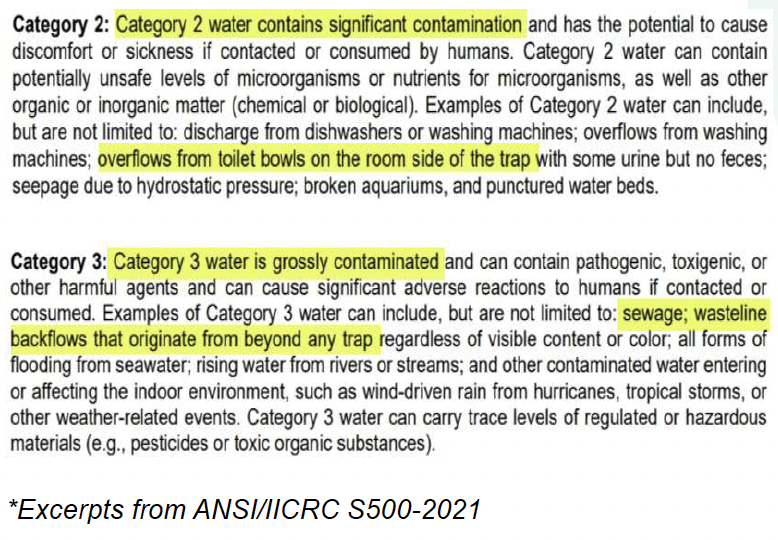Toilet Overflows vs. Sewer Backups

Toilet Overflows vs. Sewer Backups


Meet Ed
Instructor Ed Jones has over 30 years of experience in theindustry, has the title of MasterWater Restorer, is an Institute ofInspection Cleaning andRestoration Certification (IICRC)-approved instructor, and hasserved on the S500-2021consensus body committee todevelop the most recent standard.
A "toilet overflow" refers to water spilling from a single toilet due to a clog or “soft blockage” where the water overflows the toilet bowl on the room side of the trap. This means by the IICRC S500-2021 category of water definitions it is most likely a category 2 water loss, depending on if significant fecal matter spilled out onto the floor or not.
While a "sewer backup" indicates a wider issue where sewage backs up into the structure from the main sewer line, potentially affecting multiple drains, including the toilet, and often accompanied by foul smells. This type of water loss would be considered a category 3 water loss due water backing up from past the trap and be classified as grossly unsanitary.
Essentially, a toilet overflow is a localized clog within the toilet itself, while a sewer backup is a blockage further down the plumbing system impacting multiple drains.

Clog and overflow water events are often mischaracterized as sewage backup by unwitting property insurance consumers or untrained technicians. Although a clog within a plumbing system resulting in an overflow is typically covered by homeowners' policies, sewage backup is not and would require a special endorsement to the policy.

Always ask good questions about where the water is coming from and if there was a blockage in the toilet itself vs. sewage backing up from multiple drains. Obtain good photos showing condition of water and potential fecal matter.



